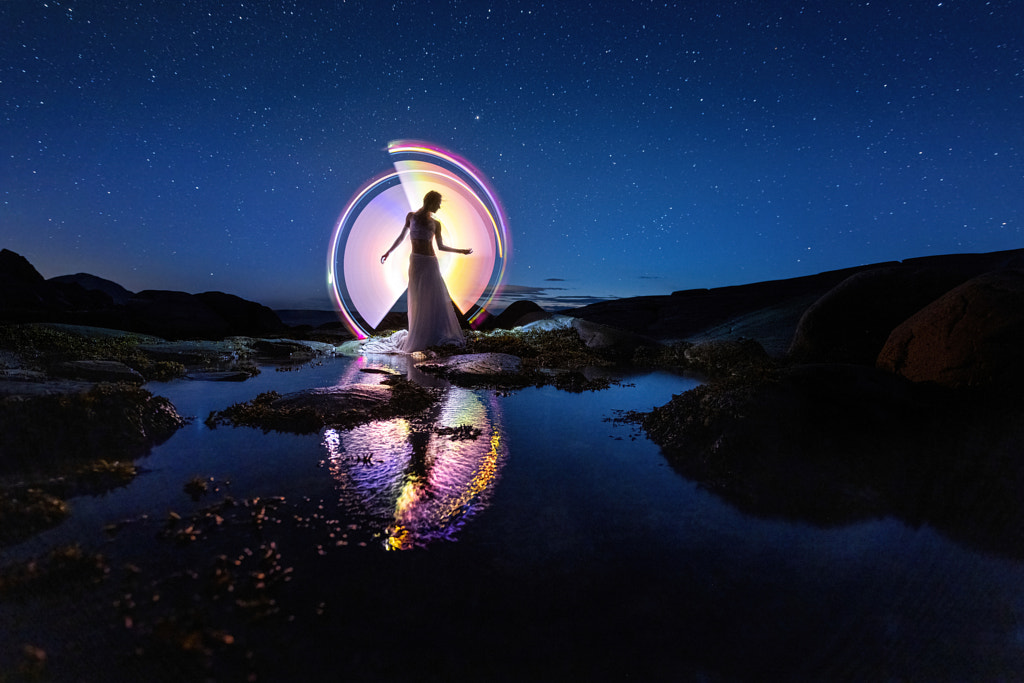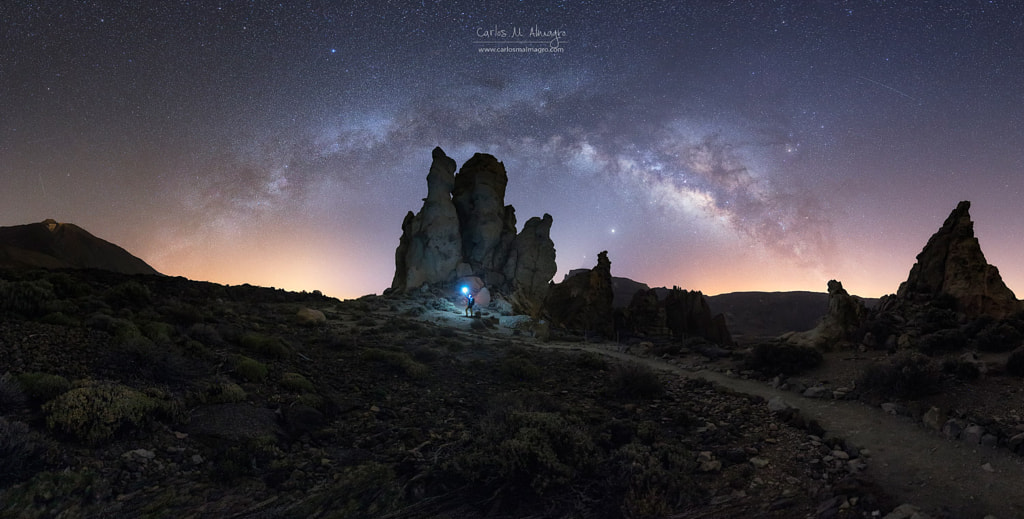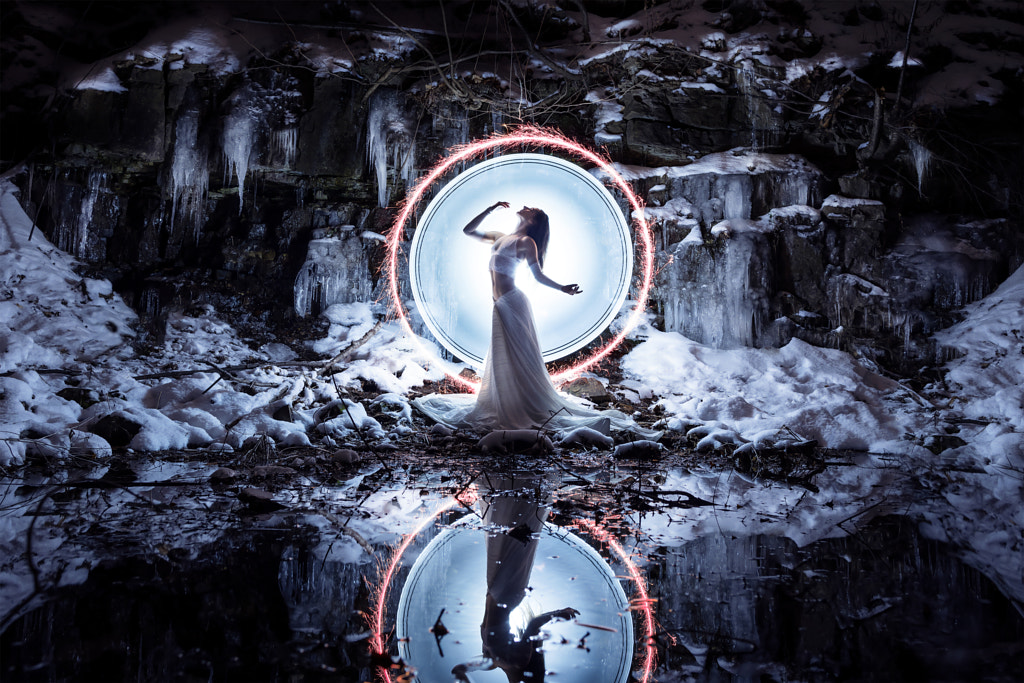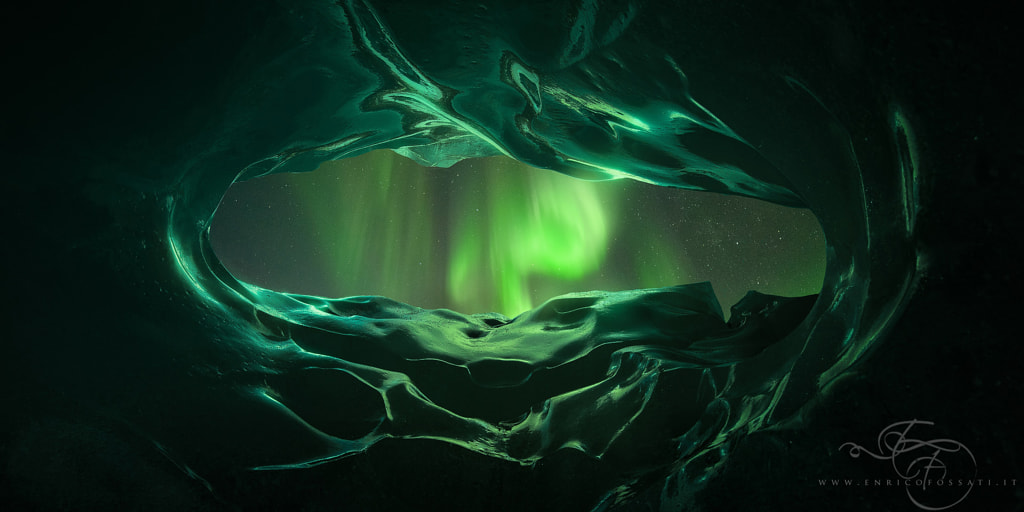The photographer Eric Paré, who has been teaching light painting techniques for years, recently noticed that his name had been hashtagged on Instagram in more than 13.3 thousand posts. On Twitter, too, where the NFT community is most active, you can find photographers around the world engaging with his work, whether they’re retweeting their favorite pictures or creating new work inspired by his collections. Collectors have posted their personal curations, using pieces they’ve bought, and Eric regularly shares behind-the-scenes videos to show how it’s done.
In many ways, the NFT space is all about this kind of sharing, collaboration, inspiration, and reinvention. The initial sale is just the beginning of the road, not the end goal in and of itself. Leading NFT collections often go on to live a life of their own, created by not only the photographer but also the followers, fans, and collectors. For that reason, cultivating a spirit of community is essential for the long-term success of a project.
In this guide, we’ll cover just a few simple ways to create an audience and keep them engaged with your digital assets and larger body of work.
Get active
Twitter and Discord are where the NFT space thrives, so hop on, set up an account and server for your project, observe, and join the conversation. You don’t need tons of followers on Twitter; a few consistently engaged people, whether they’re NFT collectors or other artists, are worth their weight in gold. In many ways, you get what you give, so remember to support others in the space and retweet work you love.
Or hope on a Discord chat and ask another photographer more about their process. The key here is prioritizing authentic connections over sales; constantly “shilling” your work is generally frowned upon, though there are dedicated threads and channels where you can do this. Answer questions, and respond to comments. Ideally, you start building that community before you drop your first project; that way, you’ll already have a built-in audience who knows your work.
Of course, that doesn’t mean you can’t post elsewhere. “Don’t forget about the other platforms, but prioritize your strategy around where you know collectors will be,” the 500x team suggests. “Telegram and Reddit are also popular in the blockchain community.” Explore a few channels to see where your work resonates.
Share your story
Feel free to be vulnerable and explain why you do what you do; collectors in this space look for artists they can connect to and get to know. They’re investing in the images, sure, but they’re also investing in you. Today’s collectors want to support artists as they grow and develop, so sharing what you’re working on behind the scenes can go a long way. You don’t have to share only your NFT work; you can also post outtakes or favorites from your archive, as long as they give us a window into who you are as a creative.
Make it personal
As an extension of sharing your story, make work that’s personal to you. Carlos M. Almagro, for example, is a photographer based in Tenerife island. For years now, he’s combined his passion for hiking with his love of night photography, and that work has culminated in the NFT collection Under the Milky Way. In each photograph, you can find the silhouette of the artist himself, dwarfed by the stars above. Whether it’s documenting a hidden landscape that’s precious to you or leaning into a niche genre that interests you, choose work that speaks to who you are.
Create a roadmap
Building a roadmap, or a plan for future opportunities for your collectors, can be an invaluable way to stay engaged with your audience. Eric Paré and his collaborator, the dancer Kim Henry, the creators of the Night Reflection collection, have consistently rewarded their NFT community with perks like a metal print for their first collector, airdrops, and access to upcoming projects. Upcoming giveaways include the opportunity to have a 20-minute private Zoom call, portfolio review, and private workshop with the artist.
For photographers, NFT roadmaps can include anything from exclusive prints to in-person experiences or events in the art metaverse. You can host giveaways, raffles, and more for your following, with surprise content announced along the way. The beauty of a roadmap is that it can expand based on what your collectors want, so take the time to listen and brainstorm ways to set yourself apart. Of course, only promise what you know you can give. The NFT community values transparency and openness.
Collaborate
The NFT space is collaborative, so feel free to reach out to artists you admire. You might even team up on projects and drops. The photographers Mikko Lagerstedt and Enrico Fossati, for example, are two of more than two dozen artists who came together for Into the Light, a Nature Photography Collective. The collective dropped their Genesis collection, SPECTRUM, in May.
Stay accessible
Home, an NFT collection by Craig Whitehead, aka Six Street Under, comprises six years of street photography. The floor price, as of this writing, is 2.25 ETH. But in April, Whitehead did something creative: he made just one image available as part of a low start auction. The starting bid: 0.05 ETH. The auction was ultimately won by a fellow street photographer, Jack Simpson, who bought the piece for 0.40 ETH. It was the final image in the entire collection; once it was snatched, the collection was sold out.
While NFTs can and do sell for high prices, there’s also something to be said for surprising collectors and offering something at a steal. You don’t have to list all your work at a low price, of course, but having a few different options or price points can open up the floor to new collectors.
Give back
Finally, consider ways of giving back to the artistic community, whether it’s investing in artists in the space, helping to onboard or covering minting costs for emerging photographers, or donating to a non-profit or charity of your choice. Elsewhere, we’ve even seen photographers open up voting on what initiatives and projects to support, with the collectors weighing in on where they want to help.
Similarly, you might consider offsetting your carbon emissions or donating to an environmental cause, as the Ethereum blockchain is associated with a high carbon footprint. Enrico Fossati, for example, has committed to donating 5% of the income from his non-fungible tokens to Give Back to Nature, an organization fighting deforestation and restoring forests.
Join the VAULT waitlist to get early access and be the first to find out how you can create, buy, sell, and earn.
The post Seven ways to build community around your NFT project appeared first on 500px.
[NDN/ccn/comedia Links]





No comments:
Post a Comment